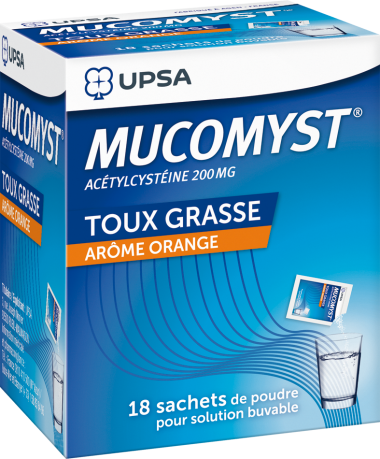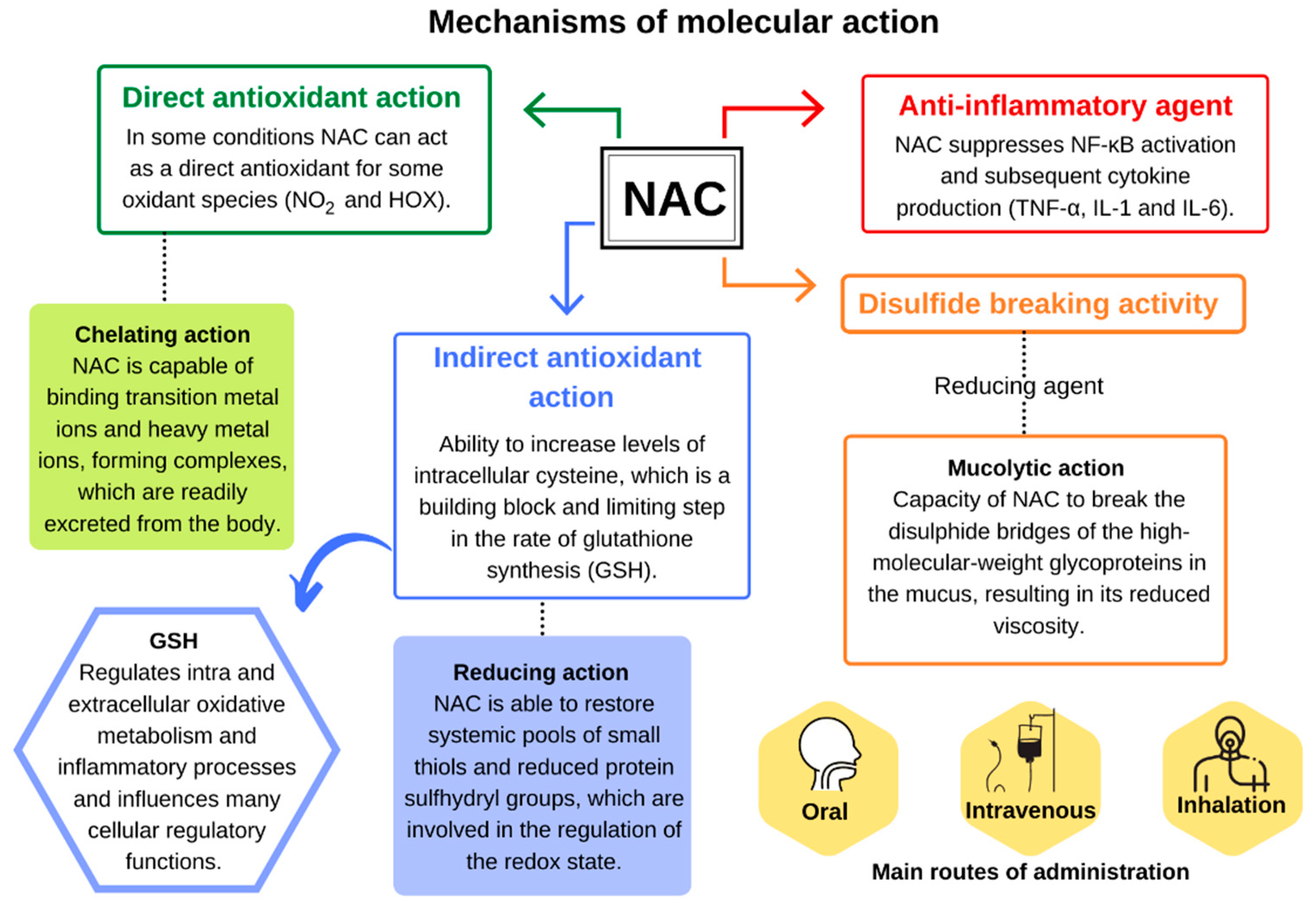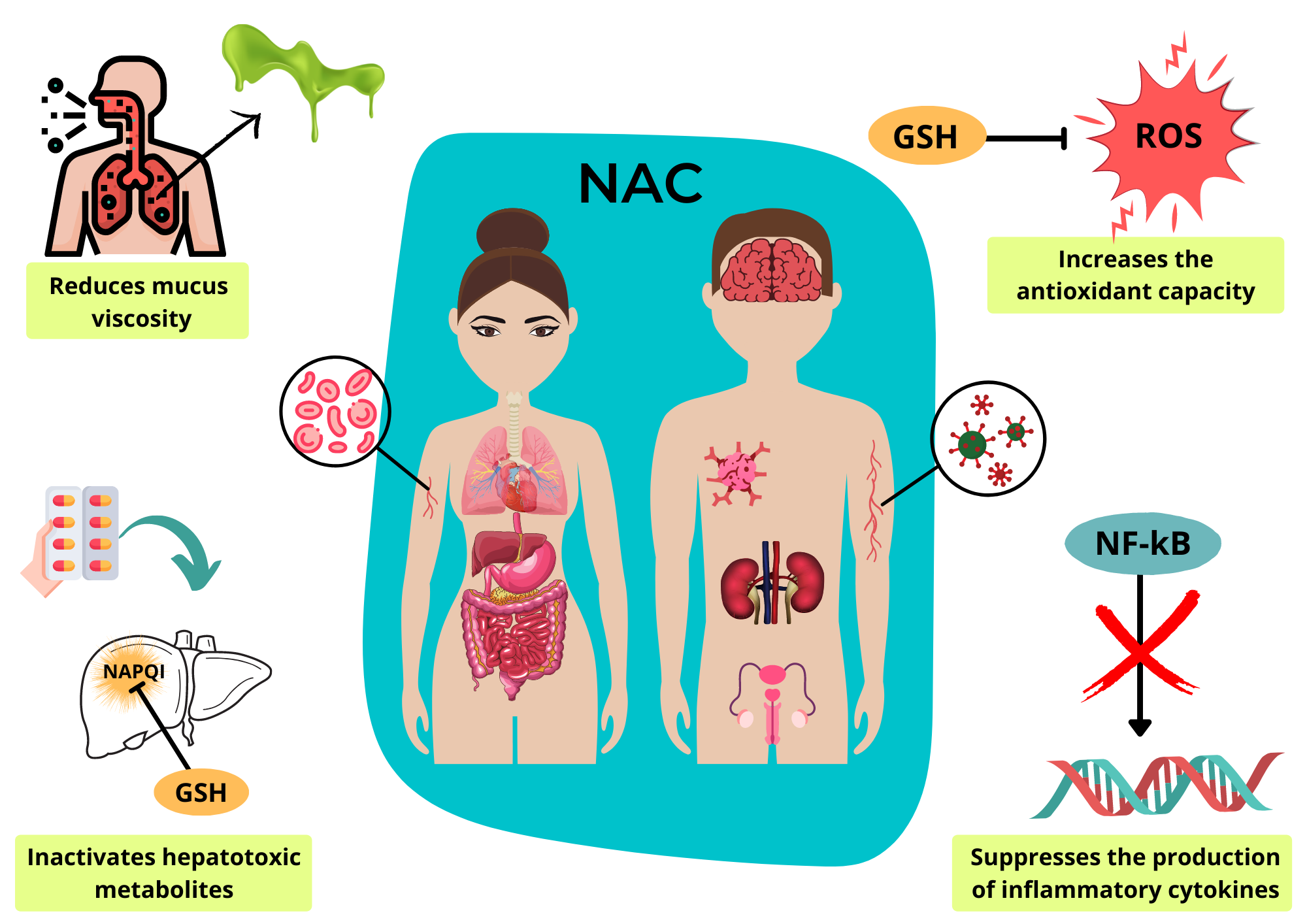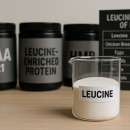N-Acetyl-Cysteine (NAC) has emerged as a remarkable supplement and has gained significant attention in the world of supplements and health due to its wide range of potential benefits.
I first came across NAC in the pages of a 90s muscle magazine that touted this compound as the next big thing. I then serendipitously came across a sachet of Mucomyst developed by UPSA Labs, a prominent French pharmaceutical company widely available in Mauritiu.
Mucomyst contained NAC as a key ingredient in its mucolytic formulation. This made me realise that some compounds have deep therapeutic potential.

This article aims to explore the various therapeutic properties and applications of NAC, supported by scientific references, including the underlying mechanisms of action.
Powerful Antioxidant Activity
NAC acts as a precursor to glutathione, a major intracellular antioxidant.
NAC enhances the body’s antioxidant defenses by replenishing glutathione levels, thereby combating oxidative stress and reducing the damage caused by free radicals (1).
NAC also directly scavenges reactive oxygen species (ROS) and helps restore the balance between oxidants and antioxidants (2).

Source: Tenório, M.C. dos S., Graciliano, N.G., Moura, F.A., Oliveira, A.C.M. de and Goulart, M.O.F. (2021). N-Acetylcysteine (NAC): Impacts on Human Health. Antioxidants, 10(6), p.967.
Respiratory Health
NAC’s mucolytic properties contribute to its beneficial effects on respiratory health. It works by breaking down disulfide bonds in mucus, reducing its viscosity and facilitating easier clearance from the airways (3).
Additionally, NAC acts as an antioxidant and anti-inflammatory agent, protecting lung tissue from oxidative damage and reducing inflammation in conditions like chronic obstructive pulmonary disease (COPD) and cystic fibrosis (4)(5).
Liver Support
NAC plays a crucial role in liver health through multiple mechanisms. It supports the synthesis of glutathione, which aids in detoxification processes and protects liver cells from damage caused by toxins (6).
NAC also acts as a direct antioxidant, reducing oxidative stress and inflammation in the liver (7).
Its ability to modulate mitochondrial function and regulate gene expression further contributes to its hepatoprotective effects (8).

Source: Tenório, M.C. dos S., Graciliano, N.G., Moura, F.A., Oliveira, A.C.M. de and Goulart, M.O.F. (2021). N-Acetylcysteine (NAC): Impacts on Human Health. Antioxidants, 10(6), p.967.
Mental Health and Neurological Disorders
NAC’s impact on mental health and neurological disorders is believed to be attributed to its multifaceted mechanisms. It modulates glutamate neurotransmission by increasing the availability of cysteine, a precursor to glutathione, which regulates the redox balance and protects neurons from oxidative damage (9).
NAC also exerts anti-inflammatory effects and modulates neuroinflammation, which has been implicated in psychiatric disorders (10). Additionally, it enhances the availability of the antioxidant glutathione in the brain, which may contribute to its neuroprotective properties (11).

Source: Smaga, I., Frankowska, M. and Filip, M. (2021). N ‐acetylcysteine as a new prominent approach for treating psychiatric disorders. British Journal of Pharmacology, 178(13), pp.2569–2594.
Immune Support
NAC exhibits immunomodulatory effects through various mechanisms. It supports the function of immune cells, such as lymphocytes and macrophages, and enhances their response to infection (12).
NAC also reduces the production of pro-inflammatory cytokines, thereby dampening excessive inflammation (13). By modulating immune responses, NAC may improve outcomes in respiratory infections and immune-related conditions.
NAC Formulations
It’s important to address one characteristic of N-Acetyl-Cysteine (NAC) that is often remarked upon: its pungent smell.
NAC is known for its distinct odor, which some individuals describe as reminiscent of sulfur or rotten eggs. This strong smell is a result of its sulfur-containing compounds.
When I first received my full bag of pure NAC raw material for product development, I remember my Courier Guy delivery man asking me the nature of the contents. The entire delivery vehicle was smelling of NAC.
NAC is available in various formulations, allowing for flexibility and customization of supplementation. One common form is the standard oral capsule or tablet, which provides a convenient and precise dosage. These formulations are widely available and allow for easy incorporation into daily supplement routines.
Another notable formulation is the effervescent tablet, which dissolves in water to create a fizzy drink. This format offers an enjoyable and refreshing way to consume NAC, enhancing the overall user experience. Effervescent tablets are particularly popular among individuals who prefer alternative delivery methods or those who find it difficult to swallow traditional capsules.

N-Acetyl-Cysteine (NAC) offers a multitude of benefits across different body systems. Its antioxidant activity, mucolytic properties, liver support, impact on mental health, and immune modulation make it a versatile supplement. The underlying mechanisms of action, including the replenishment of glutathione, reduction of oxidative stress, anti-inflammatory effects, and modulation of neurotransmission, contribute to its therapeutic potential. However, it is important to consult with a healthcare professional before incorporating NAC into your supplementation regimen to ensure appropriate usage and address individual considerations.
References
- Atkuri KR, et al. N-Acetylcysteine—a safe antidote for cysteine/glutathione deficiency. Curr Opin Pharmacol. 2007;7(4):355-359.
- Samuni Y, et al. The chemistry and biological activities of N-acetylcysteine. Biochim Biophys Acta. 2013;1830(8):4117-4129.
- Duijvestijn YCM, et al. N-acetylcysteine in cystic fibrosis: An update. Curr Opin Pulm Med. 2018;24(6):622-631.
- Dekhuijzen PNR, et al. Antioxidant properties of N-acetylcysteine: Their relevance in relation to chronic obstructive pulmonary disease. Eur Respir J. 2004;23(4):629-636.
- Zheng JP, et al. Effects of carbocisteine on acute exacerbation of chronic obstructive pulmonary disease (PEACE Study): A randomised placebo-controlled study. Lancet. 2008;371(9629):2013-2018.
- De Flora S, et al. Mechanisms of N-acetylcysteine in the prevention of DNA damage and cancer, with special reference to smoking-related end-points. Carcinogenesis. 2001;22(7):999-1013.
- Rodrigues CM, et al. N-acetylcysteine protects against liver apoptosis mediated by tumor necrosis factor-alpha and Fas ligand after bile duct ligation in the rat. J Pharmacol Exp Ther. 1999;291(1):313-319.
- García-Ruiz C, et al. N-acetylcysteine enhances the antitumor response of chemotherapeutic drugs against hepatocellular carcinoma through inhibition of the mTOR pathway. Carcinogenesis. 2009;30(8):1381-1387.
- Berk M, et al. N-acetyl cysteine for depressive symptoms in bipolar disorder—a double-blind randomized placebo-controlled trial. Biol Psychiatry. 2008;64(6):468-475.
- Dean OM, et al. N-acetyl cysteine in psychiatry: Current therapeutic evidence and potential mechanisms of action. J Psychiatry Neurosci. 2011;36(2):78-86.
- Jayashree A, et al. Therapeutic potential of N-acetylcysteine in neurological disorders. Clin Ther. 2020;42(5):791-803.
- Renno T, et al. The thiol N-acetylcysteine prevents systemic inflammation triggered by local inflammation of the exocrine pancreas. Free Radic Biol Med. 2003;35(12):1565-1573.
- Pacht ER, et al. Deficiency of alveolar fluid glutathione in patients with sepsis and the adult respiratory distress syndrome. Chest. 1991;100(5):1397-1403.

To view my Professional Profile on LinkedIn: please click here
To see my latest product creations: www.bioteenhealth.com
To view my Scientific Publications on PubMed: please click here
To get in touch, please write to: info@supplementscientist.com
Follow supplementscientist.com on Facebook: please click here
Medical disclaimer
The information presented on this website is intended for adults 18 or over. Its aim is purely educational and does not constitute medical advice. Please consult a medical or health professional before you begin any program related to exercise, nutrition, or supplementation especially if you have a medical condition. If you consume any product mentioned on our site, you do so on your own free will, and you knowingly and voluntarily accept the risks. © 2023. Supplementscientist.com







Leave a Reply